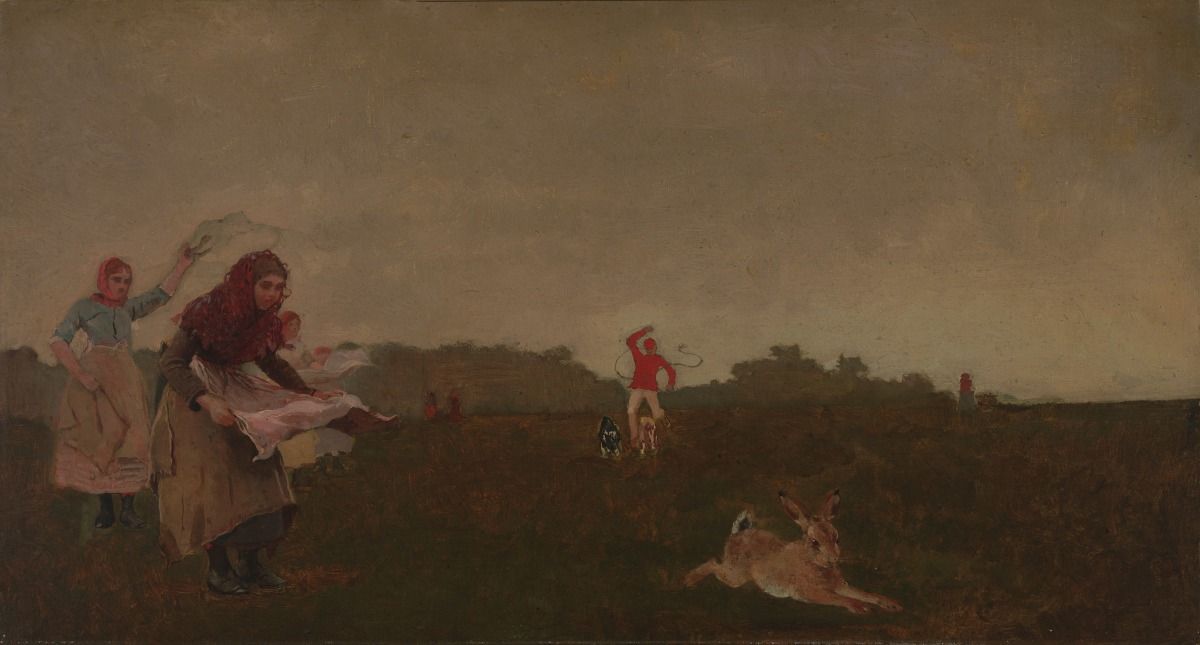
Coursing the Hare (Primary Title)
Winslow Homer, American, 1836 - 1910 (Artist)
Homer traveled to England in 1881, settling a year and a half later in the northern fishing village of Cullercoats, near the mouth of the Tyne River. This journey marked a turning point in his career: critics noted the dark mood, fluent brushstrokes, and heightened action of his English output. In this scene of coursing, the sport of hunting hares and other field animals with greyhounds, Homer exaggerates the scale relationships between the women spectators, the sportsman, and the hare, so that they appear as archetypes of pursuer and pursued rather than participants in an exactly rendered hunt. The painting’s resulting strangeness shows Homer’s affinity with Symbolist artists for whom unconscious feelings were more important than the exact representation of nature.
Paul Mellon Collection
"Coming Away: Winslow Homer in England", Worcester Art Museum, 11/11/2017-2/4/2018; Milwaukee Art Museum, 3/2 - 5/20/2018
Winslow Homer, A Retrospective Exhibition, National Gallery of Art, Washington, DC, November 22, 1958 - January 4, 1959; Metropolitan Museum of Art (dates?); Museum of Fine Arts, Boston (dates?)
Collectors' Finds, An Exhibition of Rare Works of Art of Various Schools and Periods, Maynard Walker Gallery, New York, March 1 - 19, 1955
Winslow Homer, A Retrospective Exhibition, National Gallery of Art, Washington, DC, November 22, 1958 - January 4, 1959; Metropolitan Museum of Art (dates?); Museum of Fine Arts, Boston (dates?)
Collectors' Finds, An Exhibition of Rare Works of Art of Various Schools and Periods, Maynard Walker Gallery, New York, March 1 - 19, 1955
Image released via Creative Commons CC-BY-NC
Some object records are not complete and do not reflect VMFA's full and current knowledge. VMFA makes routine updates as records are reviewed and enhanced.

